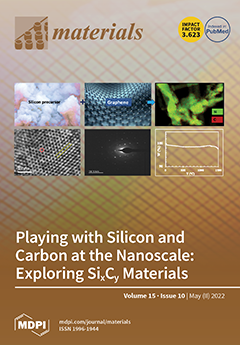Open AccessArticle
Potential of Rapid Tooling in Rapid Heat Cycle Molding: A Review
by
Nurul Hidayah Mohamad Huzaim, Shayfull Zamree Abd Rahim, Luqman Musa, Abdellah El-hadj Abdellah, Mohd Mustafa Al Bakri Abdullah, Allan Rennie, Rozyanti Rahman, Sebastian Garus, Katarzyna Błoch, Andrei Victor Sandu, Petrica Vizureanu and Marcin Nabiałek
Cited by 14 | Viewed by 3507
Abstract
Rapid tooling (RT) and additive manufacturing (AM) are currently being used in several parts of industry, particularly in the development of new products. The demand for timely deliveries of low-cost products in a variety of geometrical patterns is continuing to increase year by
[...] Read more.
Rapid tooling (RT) and additive manufacturing (AM) are currently being used in several parts of industry, particularly in the development of new products. The demand for timely deliveries of low-cost products in a variety of geometrical patterns is continuing to increase year by year. Increased demand for low-cost materials and tooling, including RT, is driving the demand for plastic and rubber products, along with engineering and product manufacturers. The development of AM and RT technologies has led to significant improvements in the technologies, especially in testing performance for newly developed products prior to the fabrication of hard tooling and low-volume production. On the other hand, the rapid heating cycle molding (RHCM) injection method can be implemented to overcome product surface defects generated by conventional injection molding (CIM), since the surface gloss of the parts is significantly improved, and surface marks such as flow marks and weld marks are eliminated. The most important RHCM technique is rapid heating and cooling of the cavity surface, which somewhat improves part quality while also maximizing production efficiencies. RT is not just about making molds quickly; it also improves molding productivity. Therefore, as RT can also be used to produce products with low-volume production, there is a good potential to explore RHCM in RT. This paper reviews the implementation of RHCM in the molding industry, which has been well established and undergone improvement on the basis of different heating technologies. Lastly, this review also introduces future research opportunities regarding the potential of RT in the RHCM technique.
Full article
►▼
Show Figures






